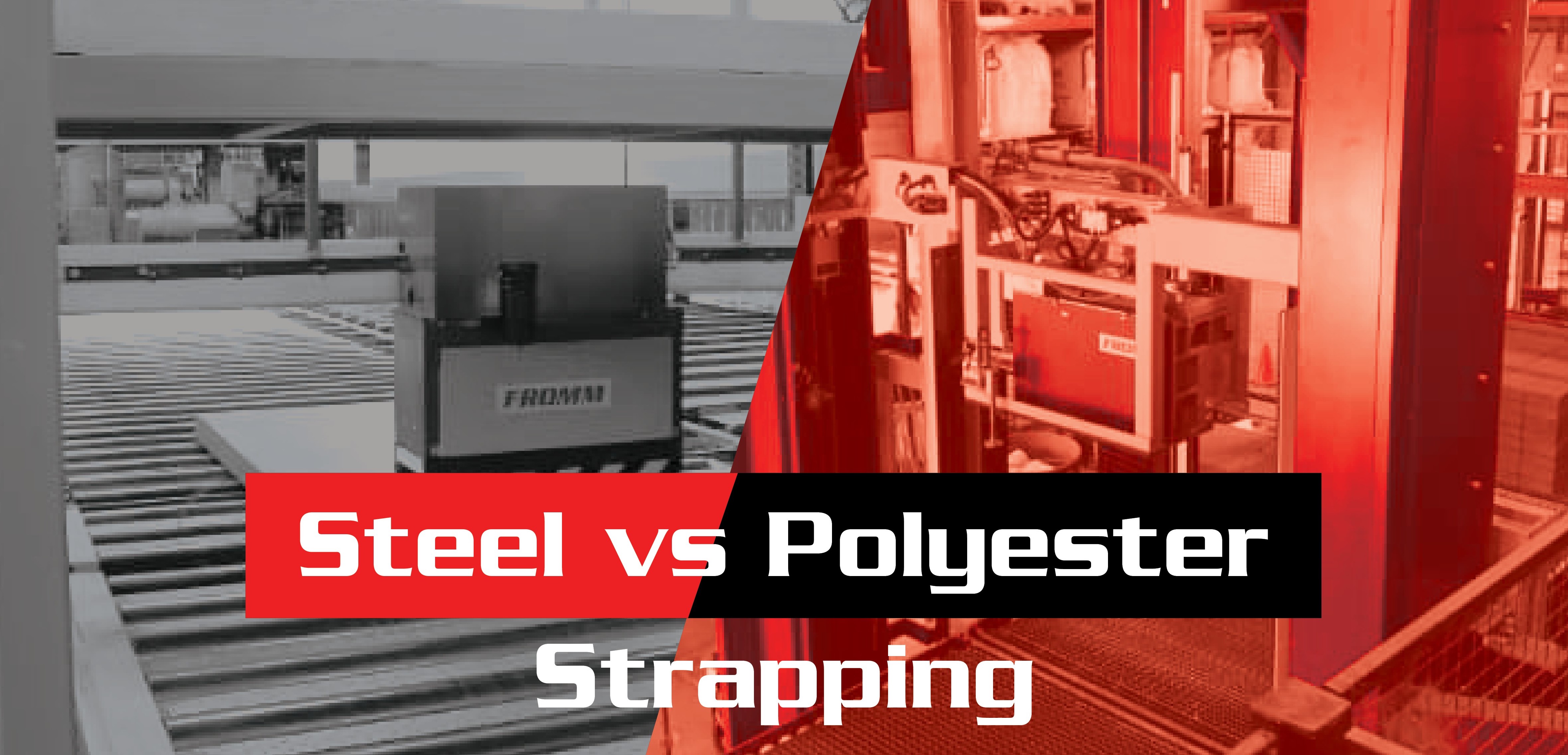Steel strapping used to be the only choice when you needed to strap a shipment. Today, however, there are many more options on the market. You can choose from polypropylene and polyethelene, as well as strong and sturdy polyester strapping.
Download our e-book, "What You Need to Know about Converting from Steel to Polyester Strapping."
One question people often ask about strapping is which material is safest. Steel strapping is strong, but it also comes with a few risks. Is plastic strapping the safer choice?
The Risks of Steel Strapping
Steel banding or strapping is made of metal, which is why it’s so strong. It takes a lot of force to bend steel. If you use steel to strap pallets or lumber, chances are the strap isn’t going to break.
Of course, being so tough also makes steel more difficult to cut. You’ll need more force and sharp tools to shear steel. With so much force involved, it’s possible for bits of steel to go flying when your team members cut a strap.
Your employees may find they fatigue faster when they’re cutting these metal banding straps. Worker fatigue could lead to injuries, as people make more mistakes when they’re tired.
Steel can also be sharp, especially when it’s cut. The edges of a strap might be rough and unfinished. The sharp ends and edges often lead to nicks and cuts on fingers, arms, and other exposed parts of the body.
Applying a seal to a steel strap requires more heat, since the metal has a higher melting point. Your strapping and sealing tools need to reach higher temperatures, which might lead to burns.
Keeping Workers Safe with Steel
Working with steel strapping requires proper worker training than the plastic banding strap. Employees should always use the right tools to cut and seal steel strapping.
They should also use the right personal protective equipment. Long sleeves and protective gloves can reduce the risk of burns and cuts.
Protective eyewear is a must. Workers cutting steel strapping often suffer eye injuries when bits of steel go flying.
Your team should also be trained to strap properly. Standing the right way, cutting in the right direction, and more can help reduce injuries on the floor.
What about Plastic Strapping?
You can take precautions, but working with steel strapping will always pose risks. That leads many people to wonder if plastic strapping is any safer.
The short answer is yes, it is. There are a few reasons why.
First, plastic yields much more easily than steel. It doesn’t require nearly the same amount of force to cut through plastic as it does to cut through steel. Not only does this reduce the risk of plastic pieces sailing off in any direction, it also means your team won’t tire out as quickly.
Cutting the right way will also reduce the risk of debris. It’s still a good idea to wear protective equipment, but plastic causes far fewer injuries than steel.
Plastic also had a lower melting point than steel. You don’t need to heat your strapping and sealing tools up nearly as much when it comes to plastic strapping.
Finally, plastic strapping manufacturers smooth out the edges of their strapping. The finish helps protect against nicks and cuts.
Is Plastic Strong Enough?
Plastic strapping is most definitely safer than steel strapping. Still you might wonder, “Is it strong enough?”
Many plant managers stick with steel because they don’t believe plastic will meet their requirements. The strength of a plastic strap depends a bit on the material, with polyester being almost as strong as steel.
Plastic also has more flexibility, which means it’s less likely to damage your shipments.
As a result, plastic strapping is appropriate for all but the heaviest of loads.
It’s Time to Switch to Safer
Unless you’re strapping extremely heavy loads, it’s time to think about switching to plastic strapping. It has many benefits, not the least of which is improved safety for your team.
If you’re ready to improve safety and learn how to make the switch, get in touch with the experts.

